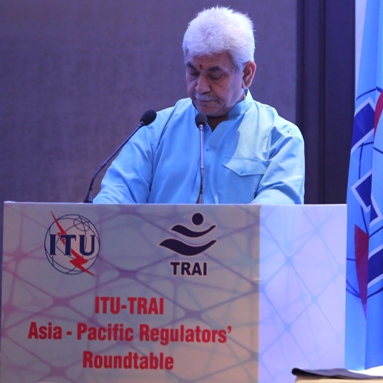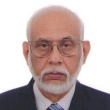  Prestigious ITU round table conference of regulators of Asia Pacific countries couldn’t have been organised at a more opportune time in New Delhi. Telecom Regulatory Authority of India (TRAI), the host of the event, is currently finalising the new Interconnect Usage Charge (IUC) regime as the country is striving to move towards a digitised society.
An ITU report ‘4th Generation Regulation: Driving Digital Communications Ahead’ has recommended that the regulators should follow bill and keep. If its immediate implementation is not possible, then it should move towards zero termination charge regime as fast as possible. It suggests pure long range incremental cost (LRIC) method for determining IUC during interim period.
The report also cautions the regulators against general misuse of Interconnect regulations by incumbent Operators to block entry of new entrants.
ITU is the United Nations specialised agency for Information and Communication Technologies (ICT) and has a membership of 193 countries.
Current IUC regime
IUC is the charge that a telecom service company, where a call originates, pays to the company where the call is terminated. Under present IUC regime, a telecom service company, where a call originates, pays at the rate of 14 paise per minute to the company where the call is terminated. For example, if an Airtel subscriber calls a Vodafone subscriber, then Airtel will pay at the rate of 14 paise per minute to Vodafone.
New operators have fewer subscribers than their incumbent competitors. This means that there are more outgoing calls than incoming calls and they pay more IUC than they receive.
That is the reason that ITU report points out that interconnect regime can be misused by incumbent operators to block entry of new entrants.
Disruption in telecom in India
Last year, when a new Operator unleashed tsunami of 4G at low prices, data starved Indian market was shaken up. The basic difference between 4G and 2G is that the former is based on Internet Protocol (IP). It blurs the difference between voice and data and increases efficiency of the network tremendously. This results in bringing down the price of carrying voice to less than one-paise per minute and enables high data speed. This enabled new operator to slash prices of data by 98% and make voice free.
The new Operator had set up the world’s first commercial 4G telecom network that offered VOLTE.
In 2G, which is basically circuit switched network, costs will always be high and data speed will be low due to inherent inefficiencies (3G is a hybrid of circuit switched and IP and is again inefficient compared to 4G). Naturally, the old order in telecom is threatened even though the incumbent players are also trying to bring in 4G.
Disruption brings innovation and helps consumers
Technology innovations bring disruption and threaten the existing order. Incumbent market leaders fear disruption and try to prevent it.
Consumers love disruption. It brings immense benefits to them. Uber and Ola became successful as these Apps have made life of a cab user easy by disrupting the old inefficient taxi services. Similarly, Netflix and Apple have brought revolution in entertainment. Tesla threatens to do the same in automobiles. Some of the giants of yesteryear like Kodak, Blockbuster, Blackberry and Motorola that could not cope up with disruption have been sent to oblivion.
One of the reasons that innovation benefited customers in taxi services, entertainment and automobiles is that these sectors are not highly regulated. However, this is not the case with telecom. That is why role of regulator becomes important when there is a disruption in telecom.
Incumbent players using IUC to block new entrant is universal phenomenon
It is a universal phenomenon that incumbent players try to block entry of new operators through regulatory means. “Interconnection barriers have been a major tool in the armoury of incumbent operators in slowing down the launch of new entrants’ services,” says an ITU report ‘4th Generation Regulations: Driving Digital Communications ahead’. India is no exception. Interconnection regulations have become battlefield for new and incumbent Operators.
Guiding Principles for IUC regulation
Now, the question is what should be the guiding principle for the regulator in deciding an important issue like Interconnection usage charge (IUC). ITU report states that “where regulators are needed to mediate interconnection disputes, rates should be based on maximising economic welfare”.
In Indian scenario, economic welfare of masses is maximised when the 4G networks are expanded so that benefits of digital economy reach everyone. The major bottleneck of Digital India program is lack of availability and access, as well as high cost of broadband. The networks can’t even carry voice without a few call drops. In places where Internet is available, download speed is a big challenge most of the time.
It is responsibility of the regulator to ensure good quality of services at affordable prices. This is possible only when circuit switched networks rapidly phase out and IP-networks expand. Similarly, all the operators should be encouraged to penetrate to rural areas. This requires a well thought out IUC regime.
TRAI should encourage IP, while 2G should be phased out. Here, IUC plays an important role. A high termination charge encourages 2G as incumbent operators make money simply by receiving calls on their depreciated networks. It discourages them from migrating to IP networks.
The ITU report recommends: “Keep interconnection regulation as simple as possible to avoid unintended consequences, following these guidelines – establish “bill and Keep” or “free peering” wherever possible, if termination charges continue to be regulated, bring them down toward zero as fast as possible.”
Make IUC zero, turn disruption into opportunity to meet Digital India goals
TRAI should bring down IUC to zero at the earliest. Now, the basic question is what should be the IUC during the interim period when operators have to pay termination cost? It should be calculated in a transparent manner.
ITU has pointed out that pure long range incremental cost (LRIC) method was successful in European Union (EU). In pure LRIC only those costs are allowed that would hypothetically be avoided if the termination service were withdrawn. This excludes all fixed costs and common-cost mark-ups. It ensures that economies of scale are fully incorporated into termination rates.
The new disruption in telecom should be turned into an opportunity to meet Digital India goals so that benefits of digital India reach everyone.
About Authors
 Dr. B K Gairola is former mission director, National e-Governance Plan (NeGP); former member secretary, National Innovation Council (NIC) set up by the Prime Minister; former Director General of National Informatics Centre (NIC); founding Director of IIIT Naya Raipur and presently its board member. He has been in restructuring committee of Prasar Bharti. He was a board member of IGNOU among others. Currently, he is advisor in various departments of the government of India. Dr. B K Gairola is former mission director, National e-Governance Plan (NeGP); former member secretary, National Innovation Council (NIC) set up by the Prime Minister; former Director General of National Informatics Centre (NIC); founding Director of IIIT Naya Raipur and presently its board member. He has been in restructuring committee of Prasar Bharti. He was a board member of IGNOU among others. Currently, he is advisor in various departments of the government of India.
 Manoj Gairola is a senior journalist and the editor of TelecomTiger Manoj Gairola is a senior journalist and the editor of TelecomTiger
|